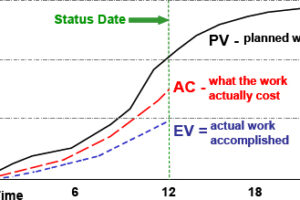Turning the Tide: A Practical Guide to Rescuing Failing Projects Before It’s Too Late
Introduction
No matter how experienced or certified you are—even if you hold a PMP®, CAPM®, or PMI-ACP®—projects can still go off track. The reasons vary: scope creep, misalignment with stakeholders, resource shortfalls, or shifting market conditions. The real test of a project manager’s competence isn’t just in avoiding failure but in detecting, diagnosing, and turning around troubled projects before they collapse.
This guide outlines a comprehensive and actionable framework for rescuing projects that are on the brink, using a blend of PMI-aligned strategies, agile thinking, and real-world experience. Whether you’re preparing for your next certification or navigating a real crisis, this road-map will help you respond with clarity, confidence, and control.
Phase 1: Spotting the Trouble Early
1. Recognize the Warning Signs
Before a project completely derails, it sends subtle (and not-so-subtle) signals:
- Missed deadlines
- Budget overruns
- Declining team morale
- Repeated change requests
- Stakeholder disengagement
Proactive project managers use tools like variance analysis, earned value management (EVM), and team health checks to spot issues before they metastasize.
2. Acknowledge Reality Without Blame
Project recovery starts with facing facts. Avoid finger-pointing and create a psychologically safe space where the team can be honest about what’s going wrong. Transparency breeds solutions.
Phase 2: Root Cause Discovery and Strategy Reset
3. Conduct a 360-Degree Diagnostic
Dig into the full picture:
- Review project goals and scope: Are they still aligned with business needs?
- Analyze documentation and KPIs: What do RAID logs, burn-down charts, or milestone slippages reveal?
- Engage stakeholders and team members: Their insights may illuminate hidden issues.
- Assess resource usage: Is the team stretched too thin? Are skill sets mismatched?
PMI’s PMBOK® Guide emphasizes tailoring approaches based on context—this diagnostic helps you decide what should change.
4. Define What Recovery Looks Like
Set measurable, realistic goals. Not all original objectives may be feasible. Ask:
- What are the must-have deliverables?
- What constraints (time, budget, scope) can be renegotiated?
- What are our success metrics post-recovery?
Phase 3: Realignment and Planning
5. Reassemble or Reinforce the Team
A failing project may need:
- Additional expertise
- Role reassignment
- A morale boost
Consider adding a recovery lead or pairing junior members with mentors. In agile environments, this could mean reforming the Scrum team structure or reassigning backlog ownership.
6. Revise the Recovery Roadmap
Now, rebuild:
- Update your WBS or product backlog based on revised scope
- Create a recovery sprint plan or milestone chart
- Reallocate resources to high-impact areas
- Update risk registers with new mitigation strategies
Use project tools like MS Project, Jira, or Trello to visualize and monitor the plan’s trajectory.
Phase 4: Execution with Precision and Agility
7. Communicate Relentlessly
PMI stresses that stakeholder engagement is ongoing. Provide:
- Weekly status reports
- Visual dashboards (e.g., Gantt charts, Kanban boards)
- Town hall meetings or stakeholder Q&As
Frequent updates maintain transparency and trust—even if all news isn’t positive.
8. Maintain Flexibility and Course Correct
Project recovery is not linear. Expect unexpected setbacks. Leverage agile principles like:
- Short iterations
- Frequent retrospectives
- Prioritized task management
Be prepared to pivot when needed—without losing sight of your revised objectives.
Phase 5: Closure and Continuous Improvement
9. Document Every Step and Decision
Create a recovery log that captures:
- What decisions were made and why
- Changes to baseline documents
- Lessons learned
This archive will be invaluable for future reference and organizational learning.
10. Conduct a Post-Recovery Review
Host a retrospective with all stakeholders:
- What worked well?
- What could have been done better?
- What risks weren’t anticipated?
Use these insights to strengthen your team’s risk management capabilities and refine your PMO playbook.
11. Celebrate the Comeback
Even if the project didn’t meet its original scope, salvaging its key deliverables or resetting stakeholder confidence is a win. Recognize the team’s resilience and progress.
Bonus Tips for PMI Certification Holders
If you’re pursuing or renewing certifications like PMP, CAPM, or PMI-ACP:
- Refer to this recovery framework when preparing for exam scenarios (especially for Change Management and Stakeholder Engagement questions).
- Align recovery documentation with PMI standards to show professional maturity and earn recognition.
Conclusion
Project recovery isn’t about perfection—it’s about progress. Even the most experienced project professionals encounter setbacks. What distinguishes high-performing leaders is their ability to identify issues early, act decisively, and adapt strategically.
So, the next time a project wobbles, don’t panic. Pull out this guide, rally your team, and lead the way forward—confident that turning things around is not only possible but often the most rewarding part of project management.
Suggested Reading
- PMI’s “Rescue of Troubled Projects” Guide – A detailed PMI-published whitepaper on recovery strategies.
- “Making Things Happen: Mastering Project Management” by Scott Berkun – Offers insight into real-world problem-solving for PMs.
- “Scrum: The Art of Doing Twice the Work in Half the Time” by Jeff Sutherland – Ideal for agile recovery strategies.
- PMI’s PMBOK® Guide – Chapter references on change management, communications, and stakeholder engagement are essential.

